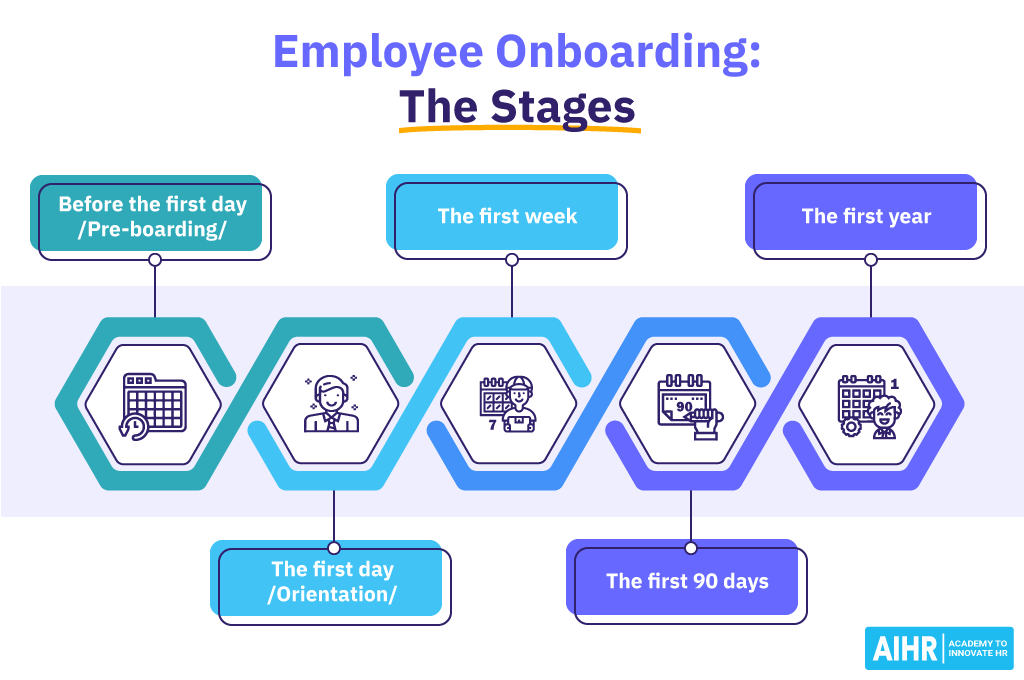Employee Onboarding
What is Employee Onboarding?
Definition:
“Employee Onboarding” is the process through which new hires integrate into a company, adapting to its culture, understanding their roles, and becoming productive team members. It involves a series of activities and orientations designed to welcome, educate, and integrate new employees, setting the foundation for a successful and engaging work experience.
Analogy:
Think of employee onboarding as the first chapter of a book. Just as the opening chapter introduces readers to the story’s setting, characters, and context, onboarding introduces new employees to the company’s environment, culture, and their roles within the organization.
Further Description:
- Orientation and Introduction: Employee onboarding includes a formal orientation program to acquaint new hires with the company’s mission, values, and structure. It introduces them to colleagues, key stakeholders, and provides an overview of the organization’s history and goals.
- Training and Skill Development: Onboarding involves training sessions to familiarize new employees with their job responsibilities, tools, and processes. This may include technical training, soft skills development, and guidance on company-specific technologies.
- Social Integration: Beyond the formal aspects, onboarding seeks to integrate employees socially into the workplace. This includes team-building activities, introductions to colleagues, and events that foster a sense of community.
- Introduction to Policies: New hires are educated on company policies, procedures, and expectations. This may cover areas such as code of conduct, dress code, communication guidelines, and compliance with workplace regulations.
Why is Employee Onboarding Important?
- Faster Productivity: Effective onboarding accelerates the time it takes for new employees to become fully productive, reducing the learning curve and helping them contribute more quickly.
- Employee Engagement: A well-designed onboarding process enhances employee engagement by making new hires feel valued, supported, and connected to the company’s mission and culture.
- Retention: Employees who undergo a positive onboarding experience are more likely to stay with the organization, reducing turnover and recruitment costs.
Examples and Usage:
- Welcome Kit: Providing new employees with a welcome kit containing essential information, company merchandise, and a personalized note.
- Buddy System: Pairing new hires with experienced employees who can offer guidance, answer questions, and provide insights into the company culture.
- Software Training: Offering training sessions on the software and tools used within the organization to ensure new hires can navigate their roles effectively.
- Cultural Events: Organizing social events, team-building activities, or welcome lunches to foster camaraderie and a positive work environment.
In summary, employee onboarding is a comprehensive process that integrates new hires into the organizational fabric, ensuring they have the knowledge, skills, and support needed to contribute effectively from day one.
Key Takeaways:
- Employee onboarding is the process of integrating new hires into a company, encompassing orientation, training, and social integration.
- It aims to accelerate productivity, enhance employee engagement, and contribute to long-term retention.
- Examples include welcome kits, buddy systems, software training, and cultural events.





